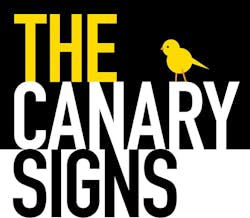The Canary Signs
It looks like 2019 will be a time of transition for the industry, and we’ll see as we progress through the year whether this is a soft patch in the market or the beginning of something more significant, such as a recession (either for the industry or for the economy as a whole).
Just as we don’t expect economists to be remodelers, I don’t expect remodelers to know all the intricacies of the economy. But if we’re working in an environment where the local or national economy is weakening, even when the remodeling market is strong, businesses will feel the effects.
Here are 10 national, local, and company indicators that remodelers can watch for to gain insight into current and future market conditions.
1. Stock Market Benchmarks
Watching longer-term trends is key, particularly because the stock market has been unusually volatile as of late. The rule of thumb: If there’s a 20% decline in the stock market from its last 52-week high, the likelihood of recession is high. As of late December, the major stock indexes were all down around 15% from their 52-week highs.
2. Consumer Confidence
Consumers drive economic growth, and confidence remains at historically strong levels. Concerns arise if we see a 20-25% drop in consumer confidence numbers. High consumer confidence translates into increased spending on discretionary projects.
3. Interest Rates
This is a trickier indicator to track. Interest rates trend up in a healthy economy, but this makes it more difficult for homeowners trying to apply for a loan. Despite this hurdle, there should be more concern with longterm declining interest rates, as these suggest investors are nervous about the outlook of the economy.
Three things are shaping up that may affect the economy in the coming year: tariffs, the federal budget deadline, and the national debt ceiling. Unresolved trade disputes would impact price and availability of basic construction commodities, while problems with government funding could affect permitting and other stages of remodeling projects.
Local Indicators
5. House Prices
A Goldilocks approach is preferred here: not too hot, not too cold. House prices are strong in markets across the country right now, and we’d like to see them remain stable or trend a bit upwards (no more than a 2% increase). If prices increase too quickly, affordability problems will arise, along with increased difficulty for young households to get into homeownership. If house prices decline too quickly, it’s an equally ominous signal that people are nervous about the economy.
6. Inventory
When homes are placed up for sale, watch for overbidding versus major price concessions. The former indicates a tight market and strong demand, while the latter suggests the opposite: Houses will sit unsold for months, with sellers lowering the price until they can find a buyer.
7. Hiring
Identify the two or three big employers in your market, and watch what they do to get a sense of the larger local hiring trends. Hiring indicates confidence in the market and the amount of work available, while laying off points to either fewer jobs or a lowered ability to pay employees.
Company Indicators
8. Project Types
Look at your portfolio of recent and upcoming jobs. If more of them fall into the discretionary, “want-to-do” category (i.e. a kitchen or bathroom upgrade), you’re looking at high confidence in the market. When people are asking for only jobs they need to do (i.e. repairing a roof or adding space for an aging family member), they’re erring on the side of caution.
9. Leads
Are people submitting serious inquiries for work, or is there a lot of tire kicking going on? Tracking close rates is a good strategy for determining what’s going on: If your close rates are lower and more people are asking questions but not willing to commit, it can indicate lower market confidence.
10. Young Households
About half of remodeling spending nationally is among households that are 55 or older, but those are stable customers often paying in cash. The movement is going to come with younger customers: Are they comfortable investing in homes and accessing credit to undertake home improvements, or are they backing away from projects right now, wary of market conditions? The answer to that is an indicator of overall conditions.


